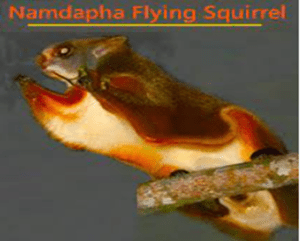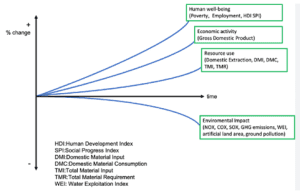FARMING CONSENSUS: ON THE GOVERNMENT AND THE FARMERS ON PROTEST
THE CONTEXT: Farmers from Punjab in thousands have assembled at three points along the border with Haryana, where they have been stopped from marching to Delhi. The protesters have a range of demands including legally guaranteed MSP for crops.
MORE ON THE NEWS:
- Some of these demands were raised during their earlier protest in 2021-22, which was called off after the central government withdrew three controversial laws that had sought to reform the agriculture sector.
- The protest now is spearheaded by the Sanyukt Kisan Morcha (SKM) (non-political), a splinter group of the body that had led the earlier protest. The body has influence in the interest groups across Haryana, Punjab and western U.P. and Rajasthan.
- There are at least three other strands of protests gathering strength.
1. Farmers in western U.P. affected by the Jewar airport project and Yamuna Expressway are up in arms.
2. In Haryana’s Sonipat, farmers are protesting land acquisition for power cables.
3. The original SKM and several trade unions have called for a national rural and industrial strike with overlapping and additional demands that include the repeal of four labour codes.
Demands of farmers:
- The headline demand in the farmers’ 12-point agenda is for a law to guarantee MSP for all crops, and the determination of crop prices in accordance with the Dr M S Swaminathan Commission’s report.
- The other demands are:
1. Full debt waiver for farmers and labourers
2. Implementation of the Land Acquisition Act of 2013, with provisions for written consent from farmers before acquisition, and compensation at 4 times the collector rate
3. Punishment for the perpetrators of the October 2021 Lakhimpur Kheri killings
4. India should withdraw from the World Trade Organization (WTO) and freeze all free trade agreements
5. Pensions for farmers and farm labourers
6. Compensation for farmers who died during the Delhi protest, including a job for one family member
7. The Electricity Amendment Bill 2020 should be scrapped
8. 200 (instead of 100) days’ employment under MGNREGA per year, daily wage of Rs 700, and scheme should be linked with farming;
9. National commission for spices such as chilli and turmeric; etc.
ISSUES:
- Legal guarantee of MSP unlikely: The government has opened talks with the farmers but a legal guarantee of MSP appears unlikely as government is silent on this matter. The Union Ministry of Agriculture and Farmers Welfare notified a committee headed by former agriculture secretary Sanjay Agrawal to make the MSP more effective and transparent. However, the committee’s terms of reference also do not include any legal guarantee to MSP, which was one of the key demands of the farmers protest of 2020-2021.
- Unsustainable farm practices: Surplus producers of grain have benefited from the MSP scheme, but the scheme bypasses subsistence farmers in poorer regions. This uneven geographical spread of procurement has also led to unsustainable farm practices in some areas.
- Majority of farmers remain uncovered: According to a NSSO survey, less than 6% of Indian farmers i.e over 9 crore agricultural households have benefited directly from selling their wheat or rice under the MSP regime.
- Procurement is concentrated in a few states:The procurement of grains is concentrated only in a few states. For example, Punjab, Haryana, western UP, Chhattisgarh and Telangana for paddy; Telangana and Maharashtra for cotton, etc.
- Poor implementation of the MS Swaminathan Commission recommendations: It recommended that MSP should be at least 50% more than the weighted average cost of production which is not in the sight of implementation.
THE WAY FORWARD:
- Consensus and consultation: The Centre must address grievances of farmers through talks. According to the Union Agriculture Minister, there are some issues on which consensus has been reached. However, some issues need a permanent resolution and there should be a committee to address them.
- Revamping of public support: There is a need for revamping of the public support for farming, which is essential for national food security. This can be achieved better through wide political consultation and by encouraging the beneficiaries of the current system to diversify production and increasing productivity.
- Creation of Agriculture infrastructure: The government should make efforts to enable farmer participation in the market by creating modern world-class agriculture infrastructure like Cold Storage facilities.
- Crop diversification: There is a need for mapping of existing cropping patterns of agro-ecological zones of producer and consumer states. Strategy for diversification policy needs to change the cropping pattern according to the changing needs of the country.
THE CONCLUSION:
Though, the MSP-based procurement by the Food Corporation of India has been the bedrock of food security but there is an urgent need for its reform as the farm sector needs a new model of public support. It cannot be left to the mercy of the market. The government should lead the efforts to create a national consensus on this question.
UPSC PREVIOUS YEAR QUESTION
Q.1 The Minimum Support Price (MSP) scheme protects farmers from the price fluctuations and market imperfections. In the light of the given statement, critically analyse the efficacy of the MSP. (2020)
MAINS PRACTICE QUESTION
Q.1 Discuss the role of Minimum Support Price (MSP) in addressing the issue of farmers’ income and agricultural productivity. Suggest alternative ways to ensure farmers income and their livelihoods.







